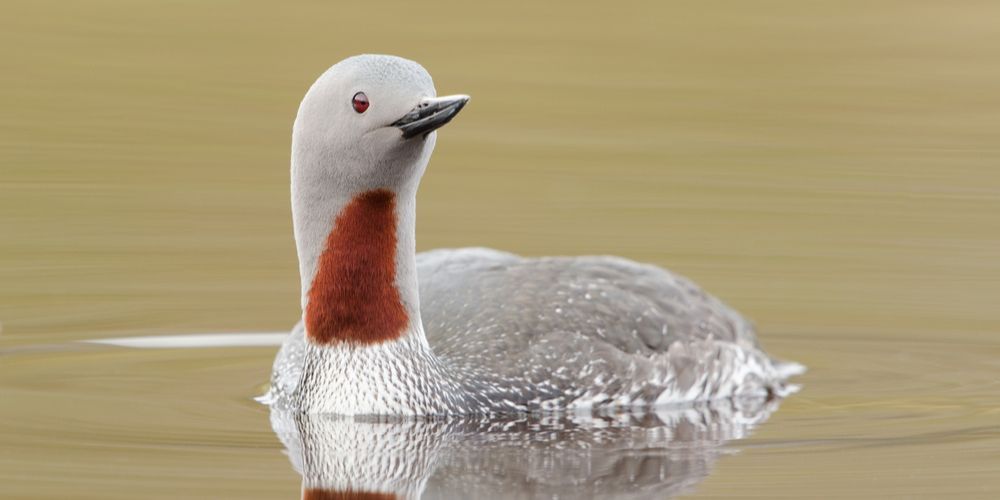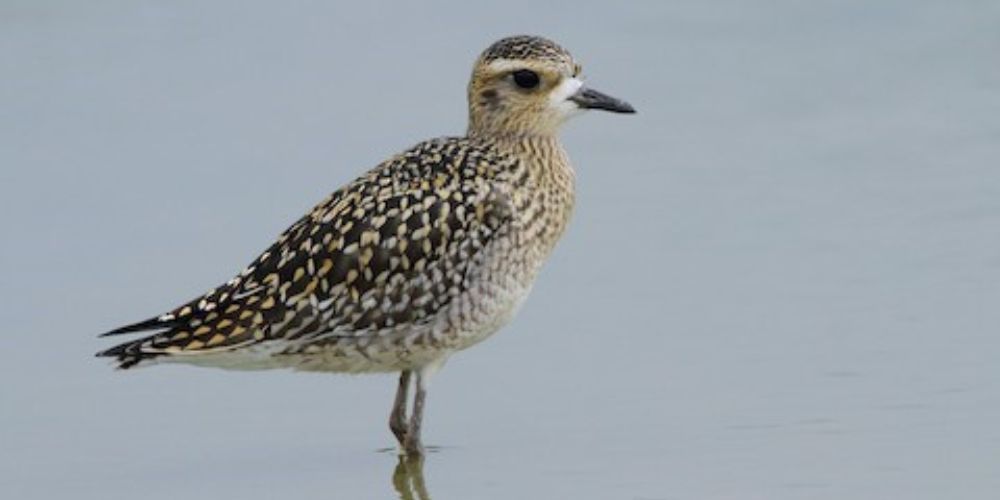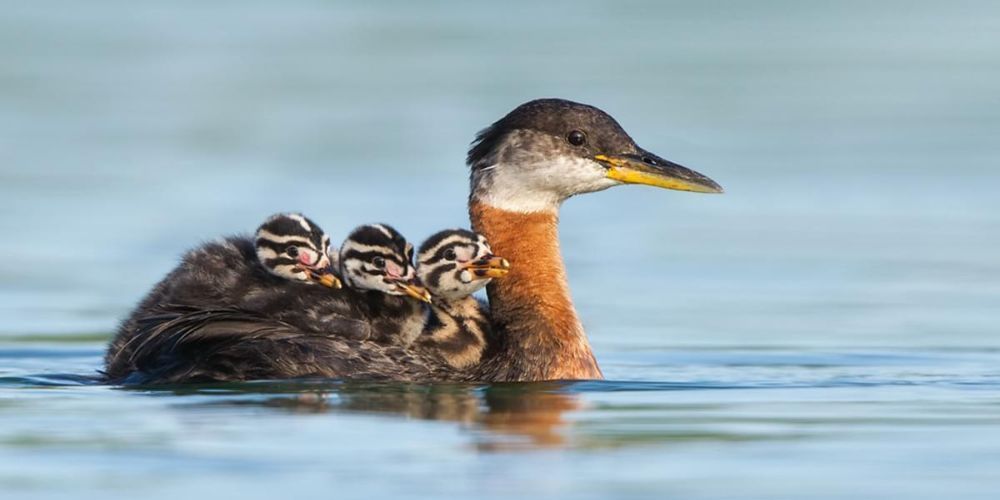Best Bird Watching Spots in North America: Top 10 Locations for Enthusiasts
June 30, 2024
For bird watching enthusiasts, finding the perfect location is more than just about spotting birds—it's an adventure through diverse habitats, each offering unique encounters with wildlife. With so many places claiming to be ideal birdwatching spots, sifting through them can be time-consuming and sometimes disappointing. That's why we've compiled an authoritative guide on North America's top ten bird-watching destinations, meticulously researched and enriched with first-hand insights from seasoned birders.
Imagine standing quietly by a remote Alaskan coastline, the crisp air vibrating with the calls of Arctic Terns as they swoop gracefully overhead. This guide ensures you know exactly where and when to experience such unforgettable moments. From secluded wetlands in Florida to expansive wildernesses in Canada, we’ll explore the best locations that promise not just quantity but diverse species, guaranteeing a fulfilling bird-watching trip without unwelcome surprises.
Some of the top bird watching spots in North America include Nome, Alaska; Mount Desert Island, Maine; and Bosque del Apache National Wildlife Refuge, New Mexico. These destinations offer diverse habitats and a wide range of bird species, making them ideal for bird watching enthusiasts.

Nome, Alaska
Located on the western coast of Alaska, Nome is a hidden gem for birdwatchers. The remote and rugged Alaskan wilderness sets the stage for an unforgettable birding experience. Nome is celebrated for its unique mix of coastal, tundra, and boreal forest habitats, attracting a variety of bird species rarely found elsewhere.
Key Species and Sightings
One of the most exciting aspects of birdwatching in Nome is the opportunity to encounter rare and captivating avian species. The coastal habitats are home to mesmerizing Red-throated Loons, charming Pacific Golden-Plovers, and the iconic Bristle-thighed Curlew. This is a chance to witness these birds in their natural environment, displaying their captivating behavior and distinctive features. During migration seasons, Nome becomes a paradise for enthusiasts as they might also encounter magnificent Arctic Terns gliding gracefully through the air and graceful Red-necked Grebes swimming in local ponds.
Best Times to Visit
For the ultimate birding experience, plan your visit during the spring and summer months, particularly between May and June. This timeframe aligns with their breeding season, providing a rare opportunity to see birds in their vibrant and stunning breeding plumage. At this time of year, you'll be treated to a spectacular display of colors as the birds engage in courtship rituals and make their nests. It's a chance to witness nature's delights at its peak.
Accessibility
While reaching Nome requires a bit of effort—the town is accessible via plane from Anchorage, the experience is well worth the journey. The remarkable landscapes and diverse avian life make it an extraordinary destination for birdwatchers looking to immerse themselves in pristine natural surroundings.
Now that we've uncovered the wonders of Nome, Alaska as a premier destination for birdwatching, let's journey into another exceptional spot for avian enthusiasts.
Everglades National Park, Florida
As we venture into the depths of the Everglades, it becomes evident that its ecological diversity provides a haven for a remarkable variety of bird species. The wetlands of the Everglades host an impressive 360 different bird species, making it a prime location for birdwatching enthusiasts. Species such as the striking Roseate Spoonbill, elongated Anhinga, and elegant White Ibis grace the skies and waters of this biodiverse territory. The park acts as an essential stopover, feeding ground, and breeding location for numerous types of birds, creating an ideal environment for observing these beautiful creatures in their natural habitat.
Winter is the highlight season for birdwatching enthusiasts at the Everglades National Park. During the winter months from December to March, migratory birds flock to the park en masse, creating a fluttering spectacle of colors and sounds as they make their temporary homes among the park's waterways and forests. These months see a significant increase in avian activity, with numerous migratory species making their way to the Everglades. This period provides a golden opportunity for birdwatchers to witness various unique species in one-of-a-kind displays as they thrive in their temporary sanctuary within the park.
Moreover, the park offers several amenities designed to facilitate and enhance the birdwatching experience. Guided bird tours led by knowledgeable rangers provide valuable insights into the behaviors and habitats of the various bird species within the park. Additionally, an extensive trail system ensures accessibility for birders of all levels, offering both novices and experienced enthusiasts equal opportunities to explore and observe these captivating creatures. With well-marked trails that wind through different habitats – from marshes to pine forests – visitors can access varied landscapes teeming with diverse birdlife. The ease of access coupled with ample amenities truly makes the Everglades National Park a welcoming destination for birdwatchers seeking memorable avian encounters.
With its rich ecological tapestry and abundance of avifauna, Everglades National Park stands out as a true paradise for birding enthusiasts seeking an up-close encounter with an exceptional array of avian wonders.

Monterey Bay, California
Standing on the shores of Monterey Bay, you're greeted by a symphony of sounds — the rhythmic crashing of waves against rugged cliffs and the melodic calls of seabirds soaring overhead. This picturesque setting is home to an array of marine and coastal birds, drawing enthusiasts from around the world to witness their mesmerizing displays.
Marine and Coastal Birds
The allure of Monterey Bay lies in its diverse avian inhabitants. The sight of Black-footed Albatrosses gracefully gliding over the deep blue waters is a common occurrence, while Tufted Puffins flaunt their distinctive plumage along the coast. Venture nearer to the coast, and you'll be delighted by the bustling activity of various shorebirds foraging along sandy stretches. With such an abundance of coastal cliffs and marine sanctuaries, the bay becomes a thriving hub for birdlife, offering countless opportunities for observation and appreciation.
Seasonal Highlights
While every season brings its own allure, summer and fall hold special significance for birdwatchers venturing to Monterey Bay. These months provide optimal conditions for observing seabirds, as they partake in their seasonal activities such as nesting and feeding. Notably, September marks a key highlight on the birdwatching calendar with the esteemed Monterey Bay Birding Festival taking place. This annual event serves as a focal point for ornithologists and aficionados alike, offering a prime opportunity to witness a wealth of avian species in their natural habitat.
Viewing Platforms
To fully immerse oneself in the avian spectacle that Monterey Bay has to offer, numerous state parks and protected areas dotting the vicinity present excellent vantage points for birdwatching. Whether perched atop a craggy cliff or nestled within pristine coastal habitats, these viewing platforms offer unparalleled perspectives to observe and appreciate the region's vibrant birdlife.
In essence, Monterey Bay stands as an idyllic haven for both coastal and marine birds, revealing itself as an unrivaled destination on the North American birdwatching map.
Grand Isle, Louisiana
Grand Isle, Louisiana is not just any ordinary island; it's a birdwatcher's paradise, offering unique and awe-inspiring birdwatching experiences. Why, you ask? Well, let me tell you.
Migratory Bird Haven
This remarkable destination hosts migrating birds of all kinds, from the majestic warblers and songbirds to the graceful shorebirds that grace its shores during their annual journeys. Indeed, Grand Isle is renowned for its grand celebration of these avian visitors each year in April—the Grand Isle Migratory Bird Celebration. It's a spectacle unlike any other, drawing enthusiasts from near and far to witness the incredible journey of these winged travelers.
Best Times for Observation
For those eager to catch a glimpse of the most diverse range of bird species, timing is key. Spring and fall are the peak migration periods when the island teems with an incredible variety of avian life. During these times, you can expect to witness an extraordinary display of bird sightings that will leave you truly spellbound.
Local Tips
As any seasoned birdwatcher will tell you, it's not just about knowing when to go; it's also about knowing where to look. Oaks and forested areas on the island play a vital role in providing essential cover and resting spots for weary migratory birds. These wooded enclaves attract and shelter countless migrating birds, making them ideal spots for observation.
In the serene beauty of Grand Isle, Louisiana, nature unfolds in all its glory as flocks of vibrant migratory birds grace the skies and trees, creating a mesmerizing spectacle for all who are fortunate enough to witness it. Whether you're an avid birdwatcher or just looking for a serene escape into the heart of nature, Grand Isle promises an unforgettable experience filled with breathtaking avian wonders.
Now, let's turn our attention to another captivating birdwatching sanctuary—Mount Desert Island in Maine.
Mount Desert Island, Maine
Imagine a place where the woodlands meet the sea, and the call of birds fills the air. That's Mount Desert Island for you - a paradise for bird enthusiasts, offering a serene and picturesque setting in Acadia National Park while providing glimpses of truly remarkable bird species.
Notable Species
Mount Desert Island is home to a rich array of bird species. Among the resident birds are majestic Bald Eagles soaring high above, while clever Gray Jays flit through the forests. The island also plays host to seasonal visitors like Atlantic Puffins, whose charming waddles never fail to captivate onlookers. Moreover, with over 20 species of warblers breeding on the island and an astonishing total of 308 bird species encountered in and around Acadia National Park, the birdwatching experience here is unparalleled.
Optimal Birdwatching Periods
Planning a visit to Mount Desert Island for premier birdwatching? Late May to early June is your prime time. This period coincides with the Acadia Birding Festival, an event that celebrates and showcases the island's avian wonders in all their glory. During this time, you'll have the best chance to witness a flurry of feathered activity as migratory birds make their annual stopover in these bountiful lands.
Accessibility and Amenities
Acadia National Park offers an exceptional range of amenities for birdwatchers. With numerous trails that wind through its diverse landscapes, there are ample opportunities to observe birds in their natural habitat. Whether you're a beginner or a seasoned birder, there are spots within the park that cater to everyone's preferences and expertise levels. Mount Desert Island provides a perfect blend of accessibility and untamed wilderness, making it an ideal destination for birdwatching enthusiasts looking for an immersive and rewarding experience.
So, whether you're seeking solitude among ancient pines or yearn for the sight of seabirds wheeling over rugged cliffs, Mount Desert Island beckons you to explore its avian wonders—an adventure waiting to unfold amidst nature's finest displays.
As we conclude our exploration of Mount Desert Island’s captivating avian realm, we now set our sights on one of North America's most revered birdwatching havens—Bosque del Apache in New Mexico.
Bosque del Apache, New Mexico
Nestled in the heart of San Antonio, Socorro County, New Mexico, the Bosque del Apache National Wildlife Refuge is a haven for birdwatching enthusiasts. Established in 1939 as a vital stopover site for migrating waterfowl, it provides a resting ground for tens of thousands of cranes, geese, and ducks during their winter migration. It's easy to see why this refuge draws bird lovers from around the world, earning its reputation as one of North America's top bird watching hotspots.
Bird Diversity
The lush wetlands and diverse habitats of Bosque del Apache make it a perfect place to witness an exceptional variety of bird species. Notable sightings include the elegant Sandhill Cranes, striking Snow Geese, and a captivating selection of ducks and raptors. Over 400 bird species have been documented within the refuge, offering an incredible opportunity for birders to encounter a wide array of avian marvels.
Prime Seasons
The magic of Bosque del Apache truly comes alive during the fall and winter months, particularly from November to February. This is when the refuge becomes a bustling hub of avian activity with migratory birds seeking sanctuary from harsher northern climates. The air is filled with the symphony of bird calls and the sky adorned with mesmerizing flocks - a sight every passionate birdwatcher should experience at least once.
Visitor Experience
For those yearning to immerse themselves even more deeply in the majestic spectacle of migratory birds, the annual Festival of the Cranes held in November is an event not to be missed. This festival offers guided tours and educational activities, providing visitors with valuable insights into the fascinating world of these migratory birds while offering unparalleled opportunities for wildlife observation and photography.
Bosque del Apache boasts awe-inspiring biodiversity and immersive experiences that create unforgettable memories for all who venture there. Whether it's observing rare bird species or partaking in educational activities, this wildlife refuge continues to enthrall visitors and inspire a deeper appreciation for the wonders of our natural world.
As we spread our wings beyond Bosque del Apache, let's soar into another magnificent avian oasis—the breathtaking Cave Creek Canyon in Arizona.

Cave Creek Canyon, Arizona
Nestled in the picturesque Chiricahua Mountains, Cave Creek Canyon is a haven for bird lovers. The canyon boasts a diverse ecosystem that attracts a wide variety of birds throughout the year. From the vibrant hues of hummingbirds to the elusive Elegant Trogon, this location offers a truly extraordinary birdwatching experience.
Few places in the United States offer the opportunity to spot such rare and unique bird species as Cave Creek Canyon. Among them, the legendary Elegant Trogon, with its splendid plumage and distinct call, can be sighted in the trees near the south fork of Cave Creek. Furthermore, during the summer months, this magical canyon becomes home to approximately 370 species of birds, including an impressive 12 species of hummingbirds, making it a thrilling destination for both novice and seasoned birdwatchers alike.
One of the highlights of visiting Cave Creek Canyon is witnessing the courtship rituals and nesting behaviors of these exquisite birds. Spring and early summer are particularly rewarding times to explore this avian paradise, aligning with peak mating and nesting periods. During these months, you may have the chance to observe a dazzling array of breeding plumages and witness intricate displays of courtship that encapsulate the essence of nature's beauty.
The birdwatching infrastructure in Cave Creek Canyon is designed to ensure an enriching experience for visitors. Well-maintained trails traverse through various habitats, offering ample opportunities for observation. Additionally, designated hotspots within the canyon provide ideal vantage points for spotting a multitude of bird species. This accessibility and carefully crafted infrastructure make birdwatching in Cave Creek Canyon an enjoyable and immersive endeavor for enthusiasts of all levels.
We've just scratched the surface of what makes Cave Creek Canyon such a remarkable destination for birdwatching. With its rare avian treasures and well-established infrastructure, it's truly a birder's utopia waiting to be explored.
In conclusion, Cave Creek Canyon stands out as a must-visit location for anyone passionate about birdwatching. Its rich biodiversity and captivating bird species make it an unparalleled destination for enthusiasts seeking an unforgettable avian adventure.
What are the best times of year to go bird watching in North America?
The best times for bird watching in North America vary by region, but generally, spring (March to May) and fall (September to November) are ideal. During these seasons, many bird species migrate, offering bird watchers the chance to see a wide variety of birds. Spring brings vibrant breeding plumage and courtship behaviors, while fall features southward migration and the opportunity to see young birds.
Which North American bird watching locations offer the most diverse bird species?
Several locations in North America are renowned for their bird diversity:
- Cape May, New Jersey: Known for its fall migration spectacle, especially raptors.
- Point Pelee National Park, Ontario: A migration hotspot with diverse species.
- Santa Ana National Wildlife Refuge, Texas: Home to a mix of tropical and temperate birds.
- Everglades National Park, Florida: Offers a unique array of water birds and waders.
- Monterey Bay, California: Excellent for pelagic bird watching.
What equipment is recommended for a successful bird watching trip?
Essential equipment for bird watching includes:
- Binoculars: A good pair of binoculars with 8x or 10x magnification.
- Field Guide: A comprehensive bird field guide for the region you're visiting.
- Notebook and Pen: For recording sightings and notes.
- Camera: Optional but great for capturing sightings.
- Appropriate Clothing: Weather-appropriate and often muted colors to avoid startling birds.
- Smartphone Apps: Apps like eBird, Merlin Bird ID, and Audubon Bird Guide for identification and logging sightings.
Are there any bird watching etiquette rules I should follow?
Yes, bird watchers should follow these etiquette guidelines:
- Respect Wildlife: Keep a respectful distance from birds and their habitats.
- Stay Quiet: Minimize noise to avoid disturbing birds.
- Leave No Trace: Carry out all trash and leave the environment as you found it.
- Use Established Paths: Stick to trails to protect habitats.
- Share Sightings: Share your observations with the bird watching community to help track bird populations.
Can beginners enjoy bird watching at these top North American locations?
Absolutely! Many top bird watching locations cater to both beginners and experienced bird watchers. Sites like Point Pelee National Park and Cape May offer guided tours and educational programs. Additionally, many refuges and parks have visitor centers with resources and staff who can provide tips and information to help beginners get started. With a bit of preparation and the right equipment, beginners can have a rewarding experience at these top bird watching spots.
Check out the latest reviews on bird watching gear
Author: William Flaiz










